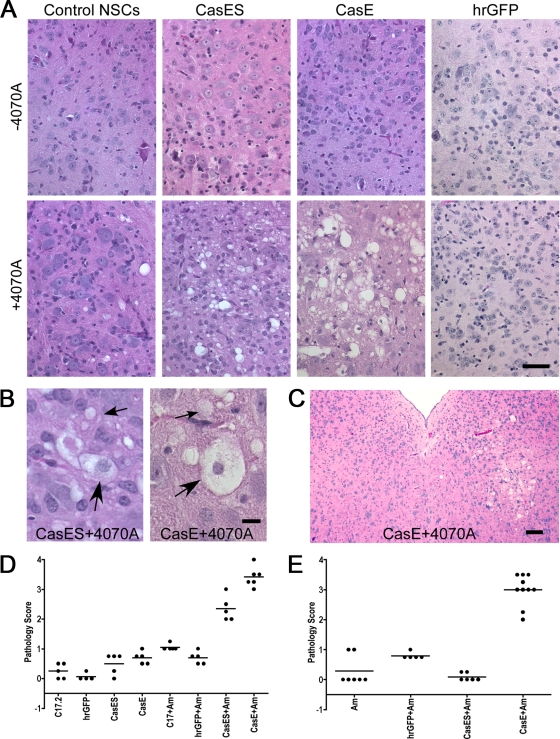FIG. 1.
4070A NSCs pseudotyping CasBrE SU or SU/TM induce acute spongiform neurodegeneration. (A) Representative H&E-stained sections are shown indicative of the histological consequences associated with brain stem transplantation of control, CasES, CasE, and hrGFP NSCs with or without 4070A virus infection (+4070A and −4070A, respectively), at 4 weeks posttransplantation. Bar, 40 μm. (B) High-magnification examples of the spongiform pathology seen in mice receiving CasES+4070A and CasE+4070A NSCs illustrate characteristic vacuolation within the neuropil (small arrows) and the presence of cells possessing intact nuclei but translucent cytoplasm (large arrows). Bar, 10 μm. (C) Example of a focal asymmetric lesion indicative of virus/vector-transducing NSC-mediated changes rather than from recombinant virus entering the CNS through the circulation (see reference 13). Bar, 100 μm. (D and E) A summary of the pathology scores observed for mice receiving NSC transplants within the brain stem (D) or lateral cerebral ventricles (E) is shown for 4 weeks postinjection. 4070A virus-infected NSCs are denoted by “+Am”.

